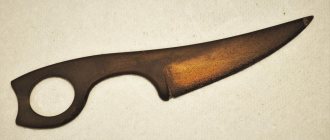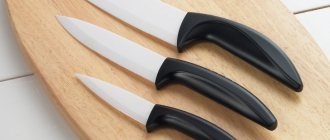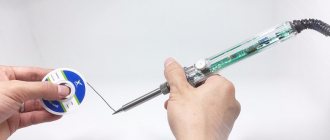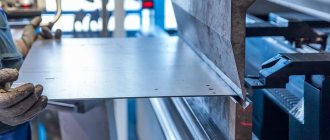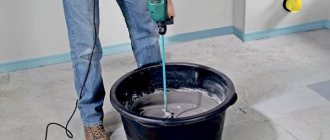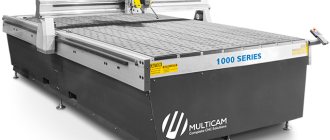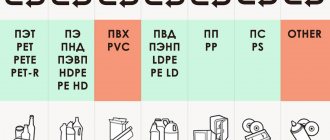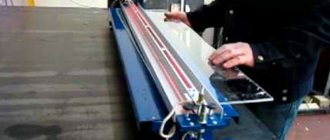Set of socks, Omsa socks
349 ₽ More details
Set of socks, Omsa socks
349 ₽ More details
Diffavtomats
Plexiglas is suitable for making furniture, lamps, advertising signs and other useful and beautiful things. In order for the structure to be durable, it is important to ensure maximum strength of all seams. Let's find out what features distinguish this or that plexiglass adhesive, and how to carry out the gluing procedure.
What kind of glue is there for plexiglass?
Glue for plexiglass is selected depending on the wishes of the consumer.
new one-component Wiko Plexy adhesive for plexiglass (plexiglass)
There are two types of glue used for repairing and restoring the integrity of products:
An adhesive mixture of acrylic with a solvent is used for extruded (cast) acrylic (aka plexiglass, plexiglass). Glue for professional work. When two identical components are combined, under the influence of the third active substance, a strong connection of the bases occurs due to the dissolution of the surface molecular layer of plexiglass. The gluing is monolithic. There are some nuances. Although this group is intended directly for gluing plexiglass (plexiglass), not all adhesives in this group will be able to connect any types of these materials
This is very important, there are exceptions, so you need to be careful when selecting the composition for certain brands of PLEXIGLAS, which is the general name of the brand. Two-component adhesive based on epoxy resin or cyanoacrylate. With their help you can quickly glue individual parts together
Suitable in some cases, and can be used for small work areas.
Household adhesives for joining plexiglass are divided into two groups according to the principle of action:
- The first include active substances that are applied to the joints before gluing. Surfaces melt. The master glues them together while the material is liquid. After drying, a monolithic seam is formed.
- Compositions that form a connecting layer between individual parts. A less durable seam is formed than when the surfaces being joined are melted.
In order not to make a mistake when choosing, you need to consider the most popular products for gluing plexiglass.
new two-component adhesive Wiko Dual Glue for plexiglass (plexiglass)
Acrifix 116 glue
Glue for plexiglass manufactured by Acrilfix, which produces high-quality substances used when joining various materials. Product 116 is a clear, thick mixture (more viscous than Acrifix 117) that has the consistency of a pourable resin. Packaged in tubes of 100 ml.
Used for gluing rough parts that have uneven edges. Effectively fills voids formed by chips and creates a uniform surface. One-component adhesive. Hardens due to the evaporation and absorption of solvents by the parts being joined.
Acrifix 117
If a person does not know how to glue plexiglass, any experienced craftsman will tell him Acrilfix 117 glue. This mixture is considered the best for gluing acrylic-based materials. He has a number of strengths and weaknesses.
Advantages:
- High strength of the finished seam.
- Dries quickly.
- Lowest level of toxicity compared to analogues.
- Long shelf life.
- Penetrates small cracks and fills them to the base.
- The transparent seam is practically invisible on the total area of the glued surface.
Flaws:
- Very high price.
- Rarely found on the shelves of construction stores.
- It is impossible to buy a small container. The standard packaging size is 1 liter.
Experienced craftsmen recommend mixing Acrylfix 117 with 116 (10/1) to reduce the consumption of expensive glue. In addition, the mixture better fills the voids of microcracks. The quality of the seams does not deteriorate.
Glue Colacryl 20
When gluing plexiglass, craftsmen often use Colacril products. It costs less than Acrylfix, however, its properties are close to expensive mixtures. Item 20 is a flowable adhesive that can be used to create clear, strong, durable seams. Similar in action to the previous brand, but cheaper.
Colacryl 30
It differs from name 20 in consistency. It is thicker, so 30 is mixed with 20 to get the adhesive of the desired thickness. The disadvantage of adhesives from this company is that they crack at the bend. This violates the integrity of the connection and worsens the appearance.
BRAUBERG glue
This transparent adhesive is universal for a large number of different materials that differ in their structure. Sold in a package called a show box. Glues and joins products made of wood, metal, PVC of any hardness, polystyrene, porcelain, ceramics, plexiglass, glass. Also glues rubber, felt and leather objects.
Advantages:
- Versatility.
- Water resistance.
- Elasticity of the taped seam.
- Bonds porous materials.
- Glues plexiglass and plain glass.
- Symbolic price.
Types of adhesives
The variety of plastics used in everyday life corresponds to an equally wide variety of manufactured compositions and methods of their use.
How to glue plastic
To dissolve the surface layer of a material, it is necessary to destroy the chemical bonds between the molecules. For this purpose, special substances are used - strong solvents. Each solvent is suitable for its own group of plastics, and may not even leave a trace on a material from another group. The basis of each adhesive composition is such a solvent. In addition, the composition may include:
- a hardener that promotes drying;
- filler - dissolved molecules of the substance for which the glue is intended.
One of the strongest solvents is dichloroethane. It is used to glue polystyrene and plexiglass.
Dichloroethane
Depending on the method of use, the products are divided into several groups:
- liquid;
- contact;
- reactionary;
- hot melt adhesives.
Liquid
Liquid ones are widely used in everyday life; they are easily and simply used at home for gluing plastic that has a porous structure. They are produced both on the basis of an organic solvent and on a water basis. They are applied to surfaces that are pressed against each other for a time sufficient for the base to evaporate. After this, the adhesive layer hardens, forming a connecting seam. A typical example is PVA glue; it can be used to glue not only linoleum, but also wood at home.
Contact
Bonding takes place in two stages:
- the surfaces to be glued are lubricated with a thin layer, which dissolves the surface layer of plastic, softening it and facilitating contact with another surface;
- After a few minutes, the parts are pressed against each other with force, the softened layers are mixed, the solvent evaporates and a seam is formed.
Moment for plastic
This is how Moment, BF-2 and others work. They can be used to glue polystyrene and other plastics together at home. They contain toxic substances, so you need to work in a well-ventilated area and prevent drops from coming into contact with the skin or mucous membranes.
Reactionary
One-component reactive agents dissolve the bonded material very quickly and harden just as quickly. These are such well-known brands as Secunda, Superglue and their analogues. The seam is strong and rigid.
Two-component ones consist, respectively, of two components stored separately from each other:
- hardener;
- fixative
Two-component adhesive
The components are mixed immediately before use and applied to the surface, where the mixture hardens to form a compound. The basis is epoxy or polyester resins. The seam at home turns out to be very durable. A characteristic feature is that complete hardening takes quite a long time, and the seam gradually increases both strength and fragility.
Hot melt adhesives
This group includes substances that exhibit their properties when heated to 110-120 °C. To use, you need a special glue gun with a heating element. Differs in precision of application. In addition to plastic, it can be used to glue wood, fabric, and paper together at home.
Possible side effects
There are secrets in the preparation and use of mastic jewelry, knowledge of which allows you to prevent an unexpected final result:
- the powdered sugar used to make mastic is prepared carefully and ground very finely, otherwise the layer will tear when rolled out;
- mastic cannot be applied to a raw cake (sour cream, impregnation), since it can dissolve upon contact with moisture;
- Before applying mastic to the butter cream, the dessert is placed in the refrigerator so that the cream hardens well;
- small decorative details can be glued by moistening them with water or egg white with powdered sugar;
- if you glue the figures and put the cake in the refrigerator, they can absorb moisture and fall off, so the decor is attached before serving the dessert;
- details made from marshmallows can be painted with food coloring;
- when the mastic cools, it loses its elasticity, which can be restored by placing the decorative material in a microwave oven or a heated oven;
- the remaining mastic is stored in the freezer - up to two months or two weeks on the refrigerator shelf;
- Dried but unused figures are placed in a box and stored for 1.5 months.
What glue is suitable
Manufacturers offer many varieties of glue suitable for gluing paper and cardboard. The composition of the products is different, so they must be used correctly.
Glue stick
This type of medium is often used in children's creativity. The advantage of a glue stick is that it:
- easy to use;
- economical in consumption;
- firmly glues different types of paper, cardboard, textiles.
The product does not stain the child’s hands and does not stain clothes.
Use a glue stick to temporarily fasten sheets to create an applique. You cannot use the product for voluminous crafts, as the parts will quickly move away from each other after drying.
PVA
This material is based on polyvinyl acetate, a substance with excellent adhesive properties. The harmless adhesive composition has no pungent odor. It is used for gluing natural material onto cardboard. When applied in a thin layer, PVA prevents the paper from deforming. After only 3-4 minutes the glue partially dries without leaving any stains. The product is left for a day under pressure for better bonding. They note the convenience of applying glue strips, since the product is packaged in bottles with a nozzle.
Super glue
The adhesive force of the substance cyanoacrylate, which is used to make the adhesive composition, is great. The viscous mass sets instantly, so you should connect the parts of the object correctly right away. Then it will be more difficult to correct the situation.
The disadvantage of the material is that when gluing it can connect the skin of the fingers. Then it is difficult to wipe off pieces of glue from it. And the product has a pungent odor, so it is better to carry out the connection in a ventilated area or in the fresh air.
Gum arabic
The adhesive composition is made from gum arabic diluted in water. Its advantages are that it:
- harmless to human health;
- has a high degree of adhesion;
- reliable and gives strength to glued seams.
It is difficult to purchase ready-made glue. More often it is prepared independently by mixing 10 grams of gum in 20 milliliters of water.
Acrylic
The peculiarity of acrylic adhesive compositions is that they hold even thick cardboard together efficiently. The glue is produced in tubes, hence the ease of application. But since the base of the material consists of water, a large amount of the applied substance leads to deformation of paper crafts.
Dextrin
Previously, a paste made from flour or potato starch was used to glue paper elements. Nowadays, in the production of dextrin glue, starch is exposed to high temperatures. Within 1.5 hours in a cabinet heated to 160 degrees, starch is broken down and converted into dextrin. The resulting substance is dissolved in water and a little glycerin is added. The product is used for gluing paper.
Spray adhesive
The new adhesive spray was highly rated because it is evenly sprayed from the can onto the sheet. This leaves no traces on your hands, table, or clothes. They quickly adhere when sprayed onto fabrics and all types of paper.
Carpentry
This type of glue is natural and is distinguished by the fact that it firmly glues parts of the object together.
It is important that the product is transparent. Long-term storage of the substance in a liquid state leads to the formation of mold inside the bottle
It is better to purchase glue in the form of a brownish powder and dilute it with water, slowly heating the mixture in a water bath. For 1 part of the substance you need 2 parts of water.
Photography glue
It is better to glue photographs into an album using rubber glue. Even after drying, if necessary, you can remove the photo and clean the cardboard surface of the album with an eraser.
Review and feedback on COLACRIL-20 and COLACRIL-30 formulations
Many home craftsmen today think about what kind of plexiglass glue is suitable. To do this, you can use one of the above-mentioned compositions; they replace Acrifix 116. For gluing, these mixtures are best mixed together, while the first is liquid and the second is thick. According to buyers, this allows for good gluing quality.
If we compare it with Acrifix, it can be noted that if glue gets into the place where the plexiglass is stressed, cracks may appear at the bend points. As a result, the strength and appearance of the product are lost.
How to glue plexiglass
For general understanding, the general principle of mechanical processing of plexiglass looks like this. For example, a jigsaw (hacksaw).
Algorithm:
- The stroke function should be set to zero for slabs up to 4mm.
- Medium feed (1st or 2nd stroke) for thicker slabs.
- Saw at high cutting speed (rpm).
- For a circular saw, the speed is 4200 rpm with a blade diameter of 320 mm.
- Only non-offset (!) discs with teeth from 9 to 15 mm.
- Full start-up before cutting begins.
- A tight installation on a protective film (or an aqueous PVAL solution) is required and cannot be removed.
- It is necessary to cool with water or compressed air. It is unacceptable (!) to cut a slab thicker than 3 mm without cooling.
- Carbide saw (disc) or diamond coated.
Anyone can glue plexiglass together. You don't need any practical experience to do this. It is enough to perform a series of actions in a certain sequence.
Step-by-step instruction:
- Wear gloves to avoid leaving greasy marks on the gluing area. Treat the parts to be glued with a cloth soaked in gasoline or alcohol.
- Fasten both parts of the product symmetrically and so that there is a small gap between them.
- Prepare a medical syringe. The needle must be processed with a file to cut the bevel. Its absence will prevent splashing of the adhesive during operation.
- Fill the syringe with glue. Apply an even layer over the gluing area.
- Press the plexiglass pieces together. Leave them in the fixed position for 1 hour.
Masking tape is used to protect the edges of the parts. Gluing of individual elements should take place in a well-ventilated area. After all work, wash off the dirt with clean water or with the addition of a mild cleaning agent. Wipe dry only after all microparticles have been completely removed.
How to glue plexiglass to metal
Often home craftsmen do not know how to glue plexiglass to metal. To do this, you can use several adhesives:
- Dichloroethane.
- Glue 88.
- Liquid Nails.
Sometimes compounds appear on the shelves of construction stores that indicate that they can be used to glue plexiglass to metal.
Plexiglas to wood
Again, not many people know how to glue plexiglass to wood. When choosing an adhesive to join two different materials, you need to understand that the wrong choice will lead to the formation of a visible seam.
The best adhesives include:
- MAFIX.
- Super glue.
- Cosmofen.
It is advisable to try experimentally gluing unnecessary parts together to see the quality of the connection.
Plexiglas to glass
It is extremely difficult to glue plexiglass to glass. Most often, the compound gains fragility in its properties. Experts recommend using the following formulations:
- COSMOPLAST 500.
- COSMOFEN.
- COSMOFEN PMMA.
These adhesives are very unstable to sudden temperature changes. It is problematic to glue surfaces that tend to heat up during use.
General technology and principles of gluing at home
To obtain a strong connection, it is necessary to prepare the surfaces to be bonded. If it is plexiglass, wipe the areas where the glue is applied with a rag soaked in gasoline or alcohol. The metal is cleaned of rust and degreased with alcohol. Wooden surfaces are wiped with a damp cloth and dried.
When gluing plexiglass, a small gap is left between the edges, which is filled with adhesive and then pressed tightly together. To obtain a neat seam, use a syringe with a sharpened needle. Setting time depends on the composition used.
Gluing plexiglass to metal and wood must be done according to the manufacturer's instructions: application method, holding time. Adhesives leave marks when dry. To protect surfaces from contamination, it is recommended to cover them with paper tape or tape.
Main components
Edible glue is distinguished by the fact that it is created on the basis of natural ingredients that are harmless to the human body. The industrial fixative most often includes:
- water;
- citric or acetic acid as a preservative;
- additive E466 - sodium carboxymethylcellulose, which can add viscosity to the mixture;
- potassium sorbate.
The release form can be of two types - liquid or powder. The first one can be used immediately; the powder one requires time to prepare. Today there are many recipes based on which you can make food glue from ordinary products at home. For this you will need:
- chicken egg whites;
- white or dark chocolate;
- lemon acid;
- flour;
- powdered sugar;
- sugar syrup.
The glue is easy to prepare, it sets quickly and can easily withstand temperature changes. You should not prepare the mass in large quantities, since its consumption is economical.
Magic Colors
Magic Colors brand edible glue is a thick mass, ready for use. The components it consists of are of plant origin. The liquid has good fluidity and density. The adhesion of the components is strong, so glue is often used to connect elements made of mastic and marzipan figures.
The mixture is applied to the surfaces to be glued together, and after some time their fastening becomes reliable. Edible glue is very useful if small elements on the cake have been damaged. It's easy to fix the situation with Magic Colors, with just one touch of the brush. The composition will help if the cook is faced with the task of combining rather massive mastic decorations.
Rainbow edible glue
The food glue of this brand is based on carboxymethylcellulose. It is obtained from caustic soda and cellulose. The substance is tasteless and odorless. Used to thicken and obtain viscosity. Rainbow edible glue is often used by professional pastry chefs to create designer pastries and wedding cakes.
It is not an allergenic product; no reactions of this type have been observed. Vegetarians can eat products using this glue, since the composition does not contain components of animal origin. Rainbow edible glue is produced in the UK. You can buy it in plastic containers of 25 or 50 grams.
QFC Essentials Edible Glue
English brand cooking glue has an edible “sugar” composition. It is ideal for preparing culinary mastic, from which flowers, decorations, and figurines are made. Its high adhesive ability helps to hold heavy dessert decorative elements. The QFC Essentials composition sets quickly and is resistant to temperature changes. Edible glue has the appearance of a colorless viscous liquid. Packaged in plastic containers of 18 grams.
What to glue with?
Polypropylene sheets, plastic, high and low pressure cellophane film - all these materials have low adhesive ability. Their surface is not only smooth, but also has no porosity to absorb adhesives. To date, no special adhesives designed specifically for polyethylene have been invented.
Types of glue
Adhesive compositions for polymer materials are divided into 2 types.
- One-component adhesive - this composition is completely ready for use and does not require any additional ingredients.
- Two-component adhesive - consists of an adhesive base and an additional component in the form of a polymerizing substance called a hardener. Before starting work, both components must be combined by mixing. The finished composition cannot be stored and is used immediately after preparation, since polymerization begins under the influence of oxygen.
According to the method of hardening, all adhesive compositions are divided into 3 groups:
- cold polymerization – the glue hardens at a temperature of 20°C;
- thermoactive polymerization - for hardening, the adhesive composition or the bonded surface of the material must be heated;
- mixed polymerization - the adhesive can harden under heated conditions or at room temperature.
Modern adhesive compositions have additives that dissolve polymer surfaces, thereby creating conditions for better adhesion. The solvent has the property of rapid evaporation, after which the polymer mass hardens, forming a seam. In the weld area, the surfaces of the two workpieces form a common fabric, which is why this process is called cold welding.
Top brands
The bulk of modern adhesive compositions contain methacrylate, which is a two-component element, but without the admixture of a primer-hardener that is harmful to the human body.
For gluing polyamide and polyethylene, adhesive compositions of several popular brands can be used.
Easy-Mix PE-PP - from the manufacturer Weicon. Crushed glass in the form of a fine dispersion is used as a primer, which, when distributed over the surface of the parts to be glued, ensures good adhesion. The composition does not contain any impurities harmful to humans, so the product can be used at home. Before applying it to work surfaces, there is no need to prepare them in any special way - it is enough to simply remove obvious contamination. The components of the paste adhesive are mixed when it is supplied from the tube directly at the gluing area.
In addition to smooth polyethylene, foamed polymer materials also need gluing. The porous structure of foamed polymers is characterized by flexibility, so the adhesive connection must be quite reliable. Other types of glue are used to glue such materials.
“88 Lux” is a Russian product. A one-component synthetic adhesive that does not contain substances toxic to humans. The adhesive composition has a long polymerization period; the seam finally hardens only a day after gluing the surfaces. When using “88 Lux” glue, the finished seam is resistant to moisture and sub-zero temperatures.
How to glue plexiglass: types and brands of the best products
If you do not have reliable information about the type of polymer, we will select adhesive for plexiglass with the expectation that it is really PMMA. In principle, if you have already dealt with gluing plastic, then there will be no intrigue for you in the question of how to glue plexiglass: the key to the strength of the seam is still in solvents.
A small educational program for those who have not previously dealt with gluing plastics: the most reliable option for gluing polymers is to dissolve the glued edges to a viscous state using solvents and join them until they dry. This way the product turns out to be essentially monolithic, and the seam holds even when the product begins to crack and break in other places.
How to glue plexiglass so that you are pleased with the result? There are several options here.
Factory glue
Of course, the most convenient compositions for working with plexiglass are various types of factory glue. Indeed, why look for something to glue plexiglass with and invent something when everything has already been invented for us?
- Artifix is a reaction adhesive that is currently considered the highest quality and most convenient when working with plexiglass. The seam obtained with its help is strong, transparent and durable, and the toxicity is lower than the toxicity of solvents if the composition does not contain dichloroethane (there are variations without its addition). True, it is better to use this glue for plexiglass if you have a small production: shelling out about 6-8 thousand rubles for a liter package to glue a model together is not very profitable. The most commonly used numbers are 116, 117, 106 and 190, depending on the degree of viscosity you need.
- Colacril is a slightly more budget-friendly replacement for the previous glue, but judging by the reviews, it can’t beat Artifix. The most commonly used numbers are 20 and 30. Different numbers can be mixed to obtain the desired viscosity.
- Cosmofen for acrylic glass is a cyanoacrylate-based superglue, also called liquid plastic. That is, a monolithic connection will be obtained only if the acrylic of the glue matches the acrylic from which the plexiglass is made. Most often it is used when working with plastic windows: it fits perfectly there. In other cases, you will still get a fairly strong and durable seam, and for not the most money. Please note that Cosmofen may require UV curing!
Solvents
You can make your own glue with a completely identical polymer, and this can be done using solvents. Yes, it will set a little slower, but the result will be no worse!
- How to make the perfect glue at home? Dissolve some of your plexiglass shavings in dichloroethane! Yes, the substance is quite toxic and it is better to work with it in the fresh air, but the parts will simply stick to each other tightly!
- If you can't find EDC, you can look for tetrohydrofuran. Depending on the nuances of the composition, it glues some types of plexiglass even better than the famous dichloroethane.
- In desperate situations, you can glue the pieces together with formic acid, glacial acetic acid, or even ordinary vinegar essence. Not with table vinegar, but with concentrate.
In general, parts can be glued together without diluting the chips - if you apply solvent to both parts, connect them and fix them until dry, the seam will again turn out monolithic.
Contact glue
What about the other options? There are a lot of other types of glue that some resource will recommend. Unfortunately, you can’t count on really high-quality seams and “forever” gluing with them, and here’s why.
- Sometimes epoxy resin is recommended for gluing plexiglass, because it really holds the joint well, and is also completely transparent. But it only connects two parts of plexiglass, without turning them into a monolith.
- Adhesive compositions like “Super Moment” do not change the structure of the material and create a very fragile seam: they can only be used for gluing together elements of a product that experiences virtually no load. In addition, when using them, the plexiglass becomes cloudy and the seam becomes very noticeable.
- The usual “Moment” and similar compositions will not last long either: you can only glue with them what you are not going to actively use, and then it will hold up mediocrely.
Bonding with epoxy glue
This is the most accessible method, if we talk specifically about gluing and not welding. Before gluing polyethylene, you need to prepare the surfaces.
Epoxy glue packaging
Epoxy glue is not a glue for gluing polyethylene, but, nevertheless, phenol-formaldehyde resin has very decent adhesion to the surface of polyethylene. In this case, you need to act like this:
Roughen the surfaces with emery cloth, then degrease and dry. Treat both surfaces with a 15-25% solution of chromic anhydride or 20-30% potassium dichromate
(Caution, caustic substances and dangerous carcinogens!) You can take another strong oxidizing agent: a strong solution of potassium permanganate. It is not much less effective, but is much safer
After treatment, dry the surfaces again. Prepare epoxy glue according to instructions. Apply a thin layer of glue to both surfaces and join. Maintain at a temperature of +30...+45°C for several hours, but it is better to keep for a day until ready.
What adhesives are suitable for plexiglass
The list of products suitable for gluing plexiglass is determined by the chemical composition of the material. Plexiglas is a synthetic product, acrylic resin/plexiglass. There are high molecular weight, low molecular weight and molded polymers. Acrylic is susceptible to the action of solvents, cyanates, and strong acids.
Under their influence, two types of chemical reactions occur that determine the bonding strength:
- The surfaces of the parts soften, mix and, having hardened, form a monolith.
- The product is partially absorbed into the pores of plexiglass, forming a binding film.
The first method is called cold welding and produces the strongest seams.
Solvent based acrylic
Dichloroethane-based plexiglass adhesive is transparent and can have a liquid or viscous consistency. The adhesive composition softens the upper layers of the parts being glued, after which it partially evaporates and is partially absorbed into the polymer.
Epoxy resin
Epoxy resin is suitable for filling shallow cracks to restore the surface layer. The intermediate layer penetrates the pores of the plexiglass, leveling out unevenness.
UV
Photopolymer adhesive containing methacrylate (organic glass is a polymer of methyl methacrylate). The hardener is ultraviolet radiation received from an LED flashlight.
Modifications of UV adhesives are intended for gluing:
- plexiglass with plexiglass;
- metal;
- tree;
- plastic.
The resulting compound has:
- high resistance to mechanical stress;
- temperature changes;
- transparency;
- durability.
The absence of solvents and non-flammability makes it safe to use.
Popular brands
For gluing plexiglass, products are used that contain solvents, acids, and polymers.
Acrifix 116
A one-component solvent-based compound (dichloroethane) is suitable for bonding cast and molded plexiglass. Viscous, transparent, high and low temperature resistant adhesive. When connected, it fills the cavities between parts.
Hardening of the seam due to evaporation and impregnation of methyl methacrylate. Acrifix is not used for plexiglass parts that have a mechanical load on bending or compression. Mixes well with Acrifix 117.
Acrifix 117
The adhesive is similar to Acrifix 116 and is easy to mix with. The consistency is liquid. Does not form cavities with PLEXIGlAS GS (high molecular weight material).
Glue COLACRIL-20
Liquid product. Does not contain solvents. The connection is transparent, but not as strong and durable as Acrifix.
COLACRIL-30
Viscous composition. To improve fluidity, mix with COLACRIL-20. Disadvantage: cracking at joints.
Moment
Special second adhesives contain cyanoacrylate. The products allow you to firmly glue plexiglass parts that are small in volume and weight.
Cosmofen
Liquid superglue for gluing plexiglass. Its composition is similar to Moment. The disadvantage is that the seam is short-lived and noticeable.
How to glue plexiglass together
To glue plexiglass together, you need to study the important features of this process. You should first prepare the material, wipe it with ethyl alcohol and degrease the surface, this will ensure better adhesion. The product must be clean and smooth.
Standard method
Plexiglas is usually glued using popular adhesives containing acrylic, solvent or epoxy resin. But to get a strong and wear-resistant seam, you need to do everything correctly.
So how to glue plexiglass at home? The following instructions will help with this:
- The surface is first degreased. A cloth or napkin is moistened with solvent or gasoline, and then the surfaces on which the glue will be applied are wiped well;
- Next, the elements of the product must be fixed, there must be a gap between them;
- The adhesive composition is applied to both parts in the form of a uniform layer. To make it convenient to apply the product, you can use a medical syringe. It is better to cut the needle a little so that the composition does not splash;
- The components are then brought together and pressed tightly until they are completely interlocked. For better fixation, you can install a weight;
- The product should be kept in a compressed position for 1 to 30 minutes.
Bonding with vinegar
At home, to fix products, you can use an affordable and inexpensive product - vinegar essence. Only a concentrate is suitable for gluing, but even it will not be able to create a strong and transparent seam.
Gluing plexiglass with vinegar is carried out as follows:
- The liquid must be applied to the edges of the product;
- Afterwards the edges are tightly compressed;
- The top layer softens, this is what allows you to create a solid seam;
- The products to be glued should be pressed down with a weight and left for a day.
How to make your own adhesive
A means for gluing plexiglass can be made at home. To do this you will need acetone, dichloroethane and crushed plexiglass. In a glass/ceramic container, mix the liquids in a ratio of 1:2 (acetone:dichloroethane). To stir, you will need a glass rod or twisted wire.
See also
Choosing glue for felt and reviewing the best brands, rules for using the composition
A piece of polymer is crushed and added to the solution, stirring constantly. The viscosity of homemade glue is determined by eye, depending on the purpose. After the composition has acquired the desired fluidity and becomes transparent, it is left for several hours for final dissolution. The product should be stored in a container with a tight-fitting lid.
A mixture obtained from solvent 646 and polystyrene foam has adhesive properties. Before use, the solutions are mixed again.
Requirements for glass adhesive
To glue glass to each other or material to other surfaces, it is necessary that the glue meets a number of requirements:
- Increased adhesion to any materials.
- Ability to withstand loads.
- Has no tint (colorless).
- Quick fixation.
- Medium viscosity, fluidity.
- Flexibility.
- Thermal and water resistance.
- No toxic compounds.
- Long shelf life.
When gluing glass and ceramic planes, the mass must have excellent adhesion properties. Application should not be inconvenient. The fixation must be quick and strong, since long-term fixation of the bonded surfaces is not always carried out.
Viscosity and fluidity vary depending on the material. When connecting porcelain or earthenware parts, the mass must be more fluid in order to fill all the unevenness. If glass sheets are connected, then more viscosity is needed, less fluidity.
If the objects to be glued are located in a living room, then the adhesive mass should not contain harmful compounds so that there is no negative effect on the body.
What are used as solvents and fillers?
Before using glue, you need to become more familiar with the components from which it is made.
Chlorine compounds
Most rubber mixtures contain chlorine-containing compounds. Manufacturers try to add a minimum amount of such components, as they have a high level of toxicity. Therefore, when choosing an adhesive for further work, you need to familiarize yourself with its composition and make sure that it does not contain many compounds that contain chlorine.
Ethicelate with nefras
Many adhesive liquids are made with the addition of nefras and ethyl acetate. This chemical compound makes the mixture better and increases its adhesion. Therefore, experts recommend using glue that contains petroleum products mixed with acetic acid.
Latex with water content
Latex is added to almost all adhesives. However, in cheap rubber glue this element is not added in its pure form, but along with water. Adding liquid to latex negatively affects the adhesive properties of the product and makes the connection less reliable. Because of this, such applied rubber mixture adheres to the surface much worse.
Resin and polystyrene
Polystyrene with resin is often added to adhesive compositions that are characterized by increased strength. Therefore, in order to glue surfaces more reliably, it is recommended to use just such means. However, you should not buy glue that contains too much polystyrene and resin. A large number of these components negatively affects the elasticity of the connecting seam.
Sulfur, amines and metal oxides
Companies involved in the production of adhesive mixtures often add metal oxides, amines and sulfur to them. It is thanks to these substances that the vulcanization process occurs, during which plastic rubber turns into rubber. The amount of additives directly depends on how much rubber is contained in the glue.
The main problem when gluing plexiglass
When the gluing result is far from what we would like to see, people in most cases blame the glue. Because of this, on forums for working with plexiglass you can stumble upon real verbal altercations! But the fact that the glue someone recommended didn’t work for you is, in the last instance, evidence that the glue, the only 100% identical variable in your cases, is the culprit of the failure.
When we say about a thing that it is “plastic”, in reality the plastic may be one of hundreds of polymers or mixtures thereof - we have the same situation with plexiglass. Depending on the composition of this plastic, the same glue will give different results, so, unfortunately, there is no escape from some risk, experimentation and experimental selection of the ideal glue.
